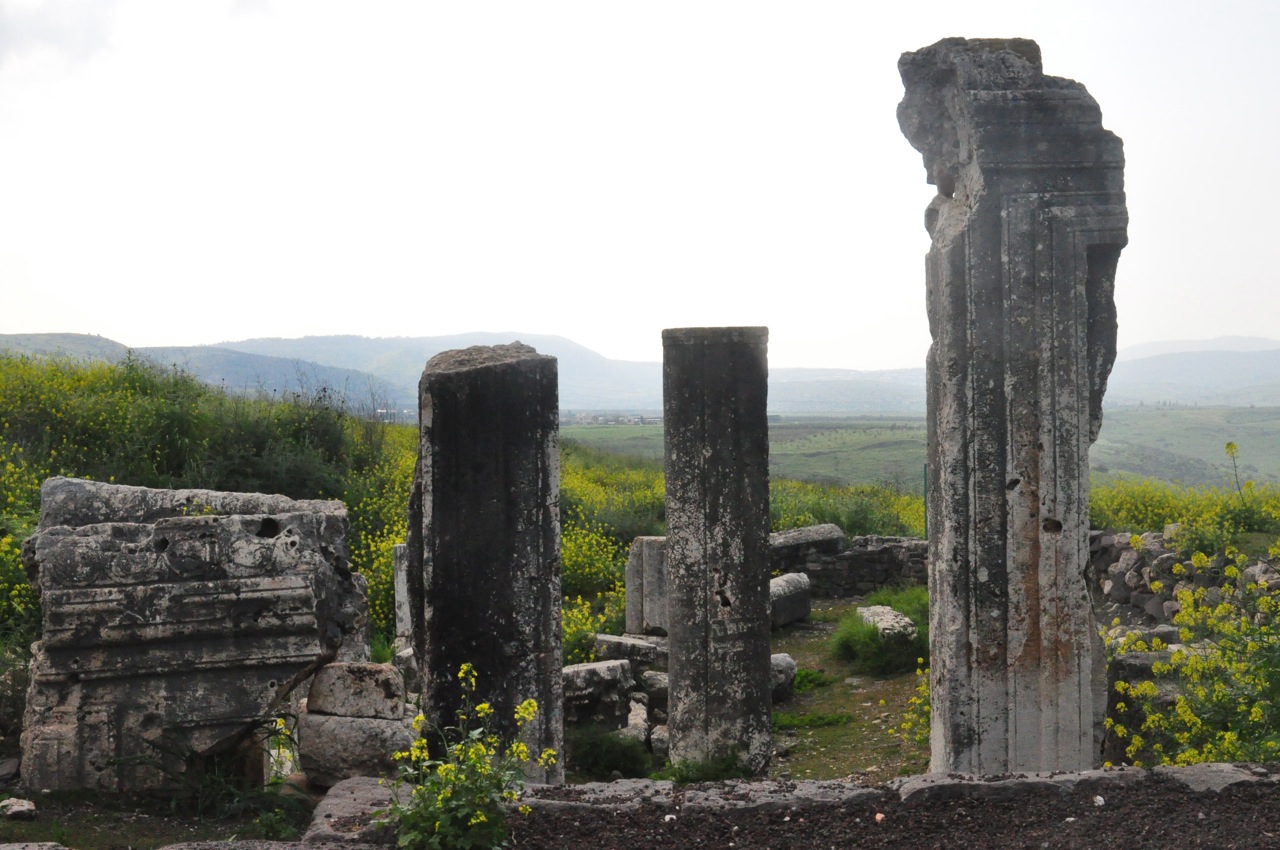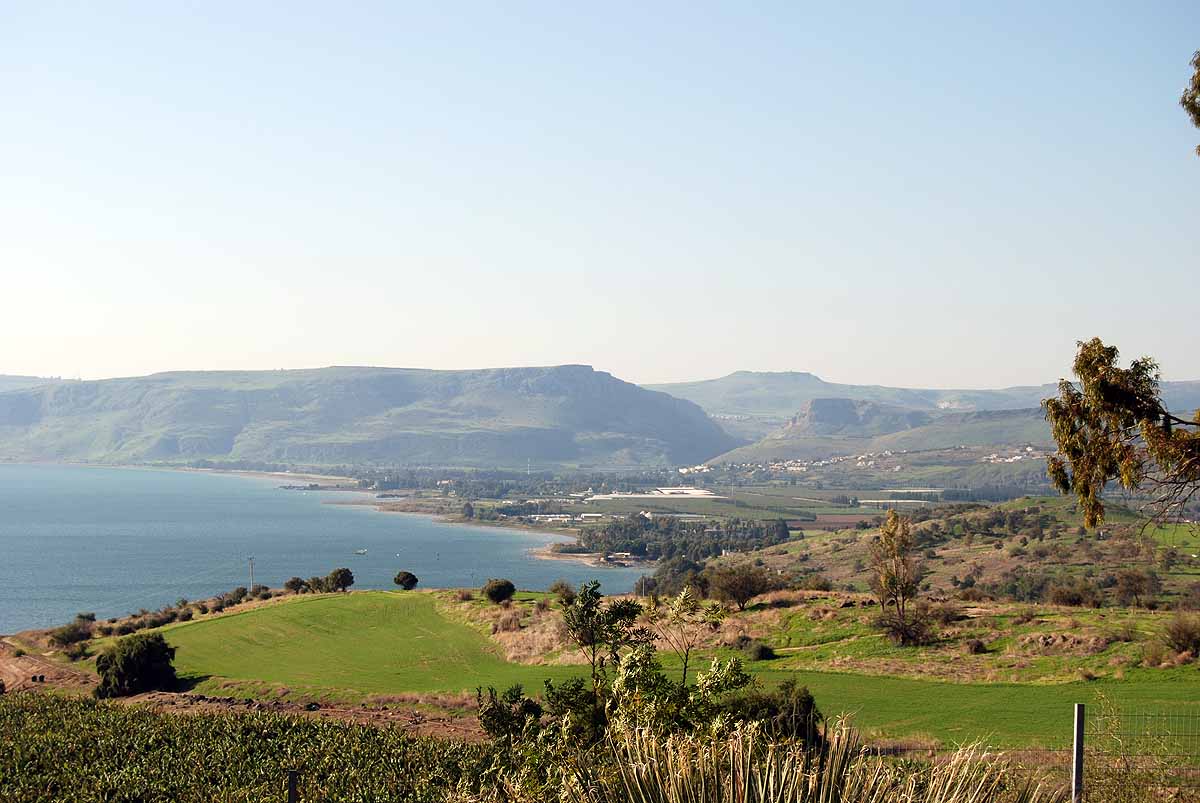The Arbel Nature Reserve is a National Park in Israel located in the Lower Galilee about five miles from Tiberias. There you will see two limestone and dolomite cliffs which face each other and rise majestically above the western shore of the Sea of Galilee. The Arbel stream flows in the valley between them past Migdal, the home town of Mary Magdalene. Galilee is also named "Kinneret" in Hebrew.
At the top are trails, a cave fortress and the ruins of an ancient synagogue. From there you can also see Mount Hermon in the Golan Heights. These cliffs were created as a result of the Jordan Rift Valley and the geological faults that produced the valleys.
The higher mountain, Mount Arbel, rises about 600' above sea level but since the Galilee is the lowest freshwater lake in the world at 700' below sea level, Arbel is actually about 1,300' above the valley and lake below.
The second mountain, north of the stream, is Mount Nitay which is 320' above sea level but this part of the reserve is closed to visitors to protect the vegetation. Looking down over the cliff, it is easy to forget that you are standing on a broad plateau and not flying over the valley.
Josephus mentions Arbel when he describes the battle in 37 BCE between Herod and Jewish rebels who barricaded themselves in the caves in the cliff. Because access to the caves was by very narrow paths, Herod had soldiers lowered over the cliff in baskets to reach the caves. In the early first century CE, Jesus performed miracles at the foot of the Arbel, moving between Migdal and Capernaum with his followers.
Outside the park and closer to Moshav Arbel are the remains of an ancient synagogue from the 4th century . It was first discovered in 1852 by the explorer and scholar, Edward Robinson. Situated in the center of the village, it was built from large limestone blocks, in contrast to the other buildings which were of black basalt common to the region.
Let's visit the Mount of Beatitudes. It has great significance to Christians because it is believed to be the location where Jesus of Nazareth delivered the "Sermon of the Mount."
The “Sermon on the Mount” is recorded in Matthew chapters 5 - 7.
In Matthew, we read that "Jesus went up into a mountain" and taught His disciples. It's location is near the northwestern shore of the Sea of Galilee (between Ginosar and Capernaum) on the hill above Tabgha.
In Matthew 5: 3-11, each begins with the phrase, "Blessed are" and are traditionally called "The Beatitudes". This is taken from the Latin word, beatus, which means blessed or happy. Therefore, if we are obedient to the Beatitudes, we will have joy, happiness, and blessings. Harold B. Lee called the Sermon on the Mount "the blueprint for perfection."
Photo: Church of the Beatitudes.
At the top of the mountain is a Roman Catholic church built in the 1930's by the Franciscan Sisters from donations by the Italian ruler, Mussolini. The building is full of numerical symbolism. I loved this church because it was smaller and not so massive as others we have visited. In front of the church, the symbols on the pavement represent Justice, Prudence, Fortitude, Charity, Faith and Temperance.
Pope Paul VI visited the church in 1964. The church has an octagonal shaped dome with each representing one of the Beatitudes.
Matthew Chapter 5: 1 Seeing the crowds, he went up on the mountain, and when he sat down his disciples came to him. 2 And he opened his mouth and taught them, saying: 3 “Blessed are the poor in spirit, for theirs is the kingdom of heaven. 4 “Blessed are those who mourn, for they shall be comforted. 5 “Blessed are the meek, for they shall inherit the earth. 6 “Blessed are those who hunger and thirst for righteousness, for they shall be satisfied. 7 “Blessed are the merciful, for they shall obtain mercy. 8 “Blessed are the pure in heart, for they shall see God. 9 “Blessed are the peacemakers, for they shall be called sons of God. 10 “Blessed are those who are persecuted for righteousness’ sake, for theirs is the kingdom of heaven. 11 “Blessed are you when men revile you and persecute you and utter all kinds of evil against you falsely on my account. 12 Rejoice and be glad, for your reward is great in heaven, for so men persecuted the prophets who were before you. 13 “You are the salt of the earth; but if salt has lost its taste, how shall its saltness be restored? It is no longer good for anything except to be thrown out and trodden under foot by men."
Photo: Dome of the church.
A picture says a thousand words and I wondered what this Roman Catholic nun might be thinking as she stood at the doorway of the church looking out on the Sea of Galilee. I love the presence of those who dedicate their lives to the glory of God in the holy places we visit in Israel.
The lie of the land next to the church forms a natural amphitheatre sloping down to the lake side, so it is more likely that Jesus stood at the bottom of the hill when he preached.
The Mount of Beatitudes was an especially lovely place to visit and overlooks the four-mile long Plain of Gennesaret, an extremely fertile area.
Josephus said this plain was the location of “nature’s crowning achievement.” The New Testament mentions that it was in this area where Jesus healed the multitudes and faced Pharisaic condemnation. (Mark 6-7). Note the Arbel clifs in the background.
































Truly spectacular.
ReplyDeleteThe Galilee area is truly the one place where one may feel the Spirit of the Savior. It is timeless.
ReplyDelete